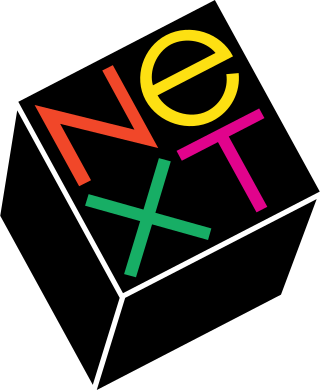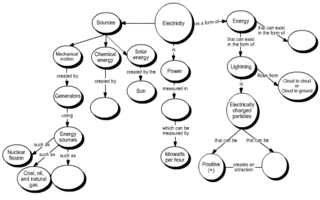Related Research Articles
Psychological statistics is application of formulas, theorems, numbers and laws to psychology. Statistical methods for psychology include development and application statistical theory and methods for modeling psychological data. These methods include psychometrics, factor analysis, experimental designs, and Bayesian statistics. The article also discusses journals in the same field.

OpenStep is an object-oriented application programming interface (API) specification developed by NeXT. It provides a framework for building graphical user interfaces (GUIs) and developing software applications. OpenStep was designed to be platform-independent, allowing developers to write code that could run on multiple operating systems, including NeXTSTEP, Windows NT, and various Unix-based systems. It has influenced the development of other GUI frameworks, such as Cocoa for macOS, and GNUstep.
Carbon was one of two primary C-based application programming interfaces (APIs) developed by Apple for the macOS operating system. Carbon provided a good degree of backward compatibility for programs that ran on Mac OS 8 and 9. Developers could use the Carbon APIs to port (“carbonize”) their “classic” Mac applications and software to the Mac OS X platform with little effort, compared to porting the app to the entirely different Cocoa system, which originated in OPENSTEP. With the release of macOS 10.15 Catalina, the Carbon API was officially discontinued and removed, leaving Cocoa as the sole primary API for developing macOS applications.
Crippleware has been defined in realms of both computer software and hardware. In software, crippleware means that "vital features of the program such as printing or the ability to save files are disabled until the user purchases a registration key". While crippleware allows consumers to see the software before they buy, they are unable to test its complete functionality because of the disabled functions. Hardware crippleware is "a hardware device that has not been designed to its full capability". The functionality of the hardware device is limited to encourage consumers to pay for a more expensive upgraded version. Usually the hardware device considered to be crippleware can be upgraded to better or its full potential by way of a trivial change, such as removing a jumper wire. The manufacturer would most likely release the crippleware as a low-end or economy version of their product.

Analogy is a comparison or correspondence between two things because of a third element that they are considered to share.

Creative nonfiction is a genre of writing that uses literary styles and techniques to create factually accurate narratives. Creative nonfiction contrasts with other non-fiction, such as academic or technical writing or journalism, which are also rooted in accurate fact though not written to entertain based on prose style. Many writers view creative nonfiction as overlapping with the essay.

The Society of Mind is both the title of a 1986 book and the name of a theory of natural intelligence as written and developed by Marvin Minsky.
In software and systems engineering, the phrase use case is a polyseme with two senses:
- A usage scenario for a piece of software; often used in the plural to suggest situations where a piece of software may be useful.
- A potential scenario in which a system receives an external request and responds to it.
The following outline is provided as an overview of and topical guide to software engineering:

A software wizard or setup assistant or multi-step form is a user interface that leads a user through a sequence of small steps, like a dialog box to configure a program for the first time. They are used to make complex, unfamiliar tasks easier by breaking them into smaller pieces.

A concept map or conceptual diagram is a diagram that depicts suggested relationships between concepts. Concept maps may be used by instructional designers, engineers, technical writers, and others to organize and structure knowledge.

ACT-R is a cognitive architecture mainly developed by John Robert Anderson and Christian Lebiere at Carnegie Mellon University. Like any cognitive architecture, ACT-R aims to define the basic and irreducible cognitive and perceptual operations that enable the human mind. In theory, each task that humans can perform should consist of a series of these discrete operations.

Note-taking is the practice of recording information from different sources and platforms. By taking notes, the writer records the essence of the information, freeing their mind from having to recall everything. Notes are commonly drawn from a transient source, such as an oral discussion at a meeting, or a lecture, in which case the notes may be the only record of the event. Since the advent of writing and literacy, notes traditionally were almost always handwritten, but the introduction of notetaking software has made digital notetaking possible and widespread. Note-taking is a foundational skill in personal knowledge management.
The Extensible Metadata Platform (XMP) is an ISO standard, originally created by Adobe Systems Inc., for the creation, processing and interchange of standardized and custom metadata for digital documents and data sets.
In philosophy of mind, the computational theory of mind (CTM), also known as computationalism, is a family of views that hold that the human mind is an information processing system and that cognition and consciousness together are a form of computation. It is closely related to functionalism, a broader theory that defines mental states by what they do rather than what they're made of.

Write Brothers, Inc. is an American computer software publisher founded in 1982 by Stephen Greenfield and Chris Huntley as Screenplay Systems. The company's first program was Scriptor, the world's first screenplay formatter. The company's programs are designed specifically for writers with their flagship programs Movie Magic Screenwriter, Dramatica Pro and StoryView.

FutureBasic is a free BASIC compiler for Apple Inc.'s Macintosh.
In science, computing, and engineering, a black box is a system which can be viewed in terms of its inputs and outputs, without any knowledge of its internal workings. Its implementation is "opaque" (black). The term can be used to refer to many inner workings, such as those of a transistor, an engine, an algorithm, the human brain, or an institution or government.

The Fire HD, also known as Kindle Fire HD prior to 2014, is a member of the Amazon Fire family of tablet computers. Fire HD refers to Amazon Fire family tablets with HD resolution displays. These devices run the Fire OS operating system.

Mindful Yoga or Mindfulness Yoga combines Buddhist-style mindfulness practice with yoga as exercise to provide a means of exercise that is also meditative and useful for reducing stress. Buddhism and Hinduism have since ancient times shared many aspects of philosophy and practice including mindfulness, understanding the suffering caused by an erroneous view of reality, and using concentrated and meditative states to address such suffering.
References
- ↑ Dershowitz, Nachum; Nissan, Ephraim (2014-12-04). Language, Culture, Computation: Computing for the Humanities, Law, and Narratives: Essays Dedicated to Yaacov Choueka on the Occasion of His 75 Birthday. Springer. p. 384. ISBN 9783642453243.
- ↑ Sayre, Shay; King, Associate Professor Emeritus Cynthia; King, Cynthia (2010-04-05). Entertainment and Society: Influences, Impacts, and Innovations. Routledge. p. 82. ISBN 9781135839956.
- 1 2 Johnson, R. Colin (22 July 1996). "'Dramatica' links neuron dynamics to mind". Electronic Engineering Times. Retrieved 2016-02-24.
- ↑ Davis, John K. "The Mind as a Novel Metaphor". Academic Exchange Quarterly Summer 2003 Volume 7, Issue 2. Retrieved 2016-02-24.
- ↑ "Screenwriting Seminar at UCLA Extension". Los Angeles Times . April 26, 1996. Retrieved May 23, 2017.
- ↑ Dramatica – A New Theory of Story, online version.